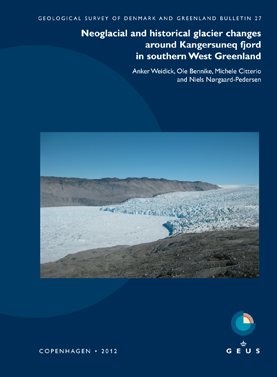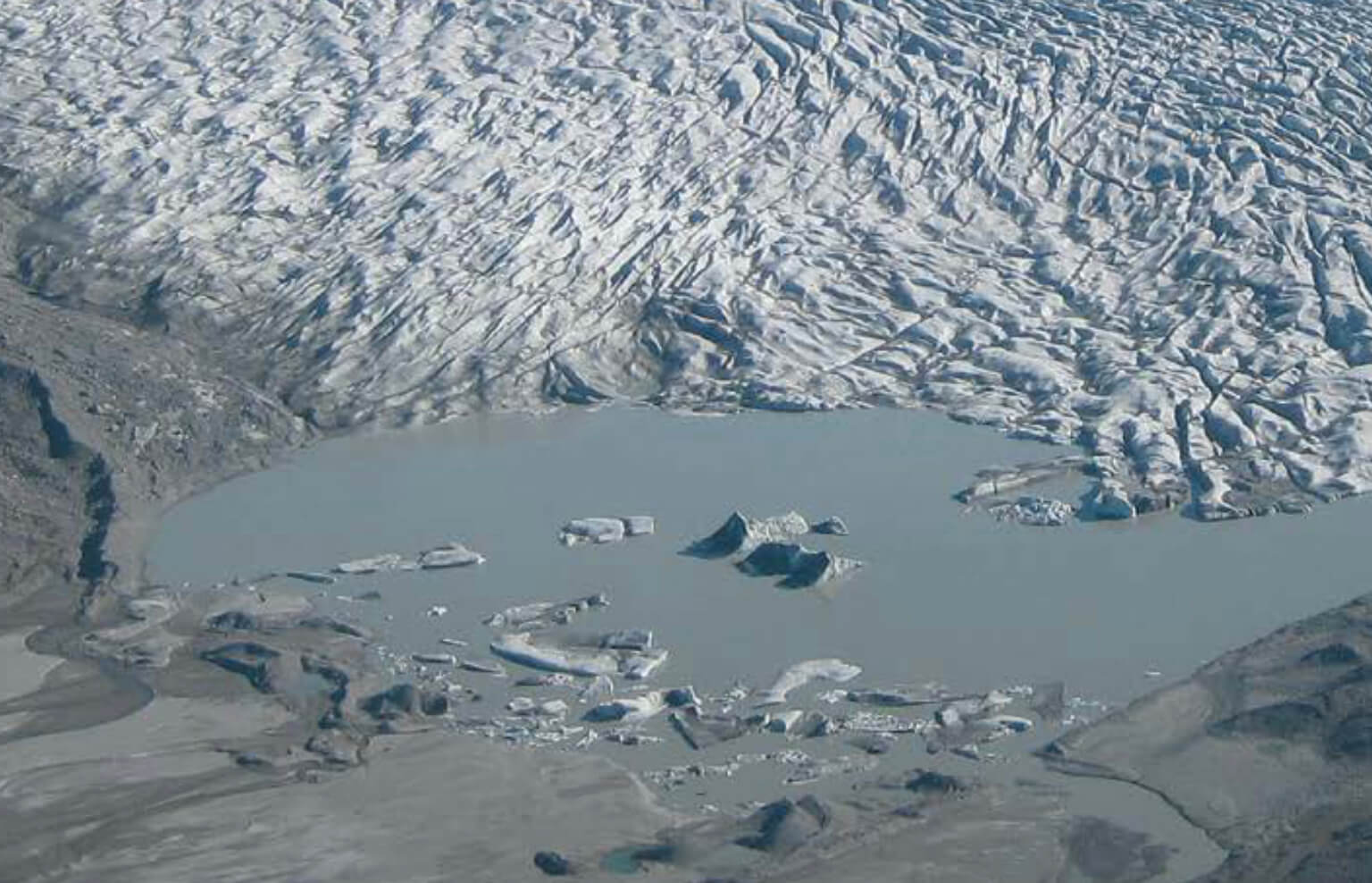Neoglacial and historical glacier changes around Kangersuneq fjord in southern West Greenland
Anker Weidick, Ole Bennike, Michele Citterio and Niels Nørgaard-Pedersen
The Greenland ice sheet is losing mass at an accelerating rate due to climate change. Prediction of the future behaviour of the ice sheet depends on our understanding of the links between climatic variations and glacial fluctuations in the distant and recent past. This bulletin presents an overview of glacier fluctuations in south-western Greenland over the last 300 years, with particular focus on the inner parts of Nuup Kangerlua. The early record is based on written descriptions, paintings, photographs and maps of the area from the 1700s and 1800s, together with archaeological data from Norse ruins; aerial photographs and satellite images from the 1900s provide a link to the present.
The lowland marine outlets from the Inland Ice in south-western Greenland were mainly characterised by large amplitude changes during the Late Holocene, as illustrated in this bulletin by the Kangiata Nunaata Sermia glacier system which has receded over 20 km during the last two centuries, demonstrating a marked response to climatic fluctuations during and since the Little Ice Age. Other examples of such behaviour are provided by the Eqalorutsit Killiit Sermiat glacier at the head of Nordre Sermilik fjord in southern Greenland, and by Jakobshavn Isbræ in Disko Bugt in central West Greenland. In contrast, where uplands and highlands extend below the marginal parts of the Inland Ice, the outlets have been advancing almost up to the present, so that the position of the glacier front around AD 2000 broadly coincides with the Little Ice Age maximum. It is notable, however, that the number of advancing outlets has decreased markedly in recent years.






